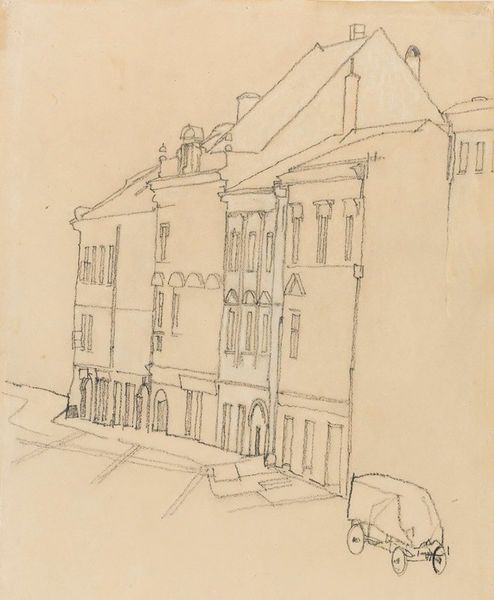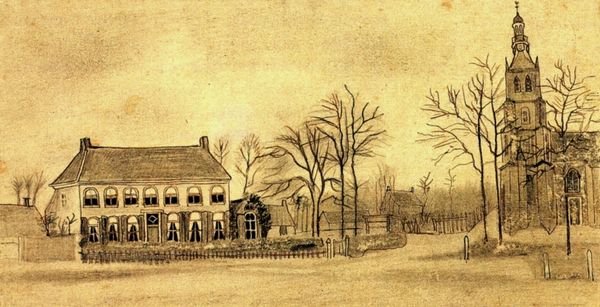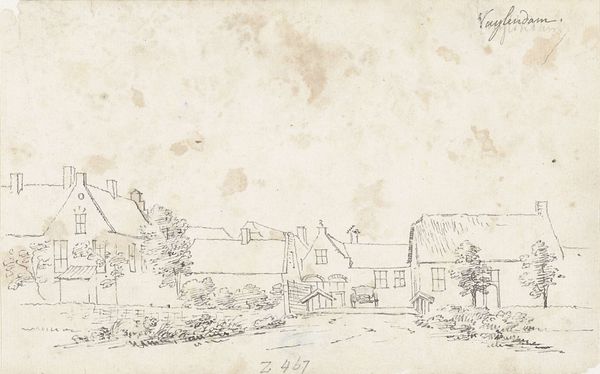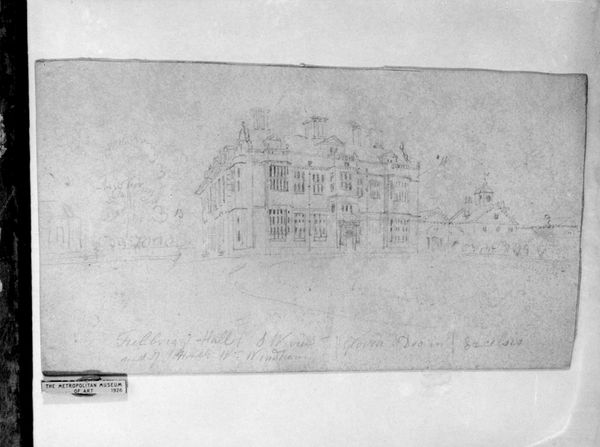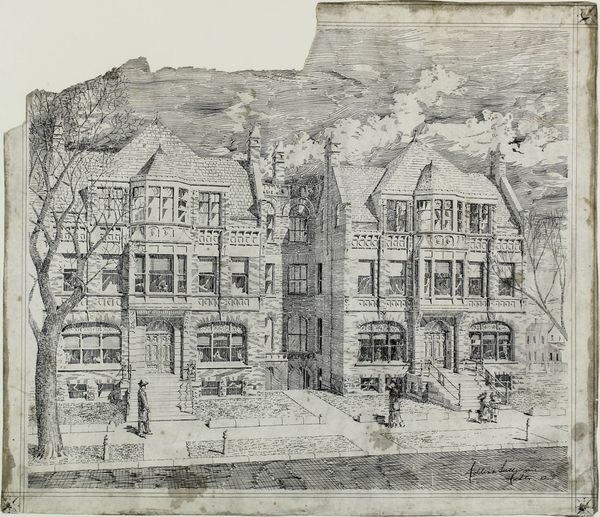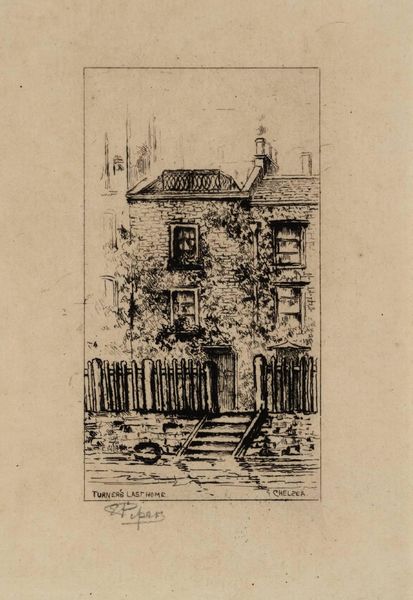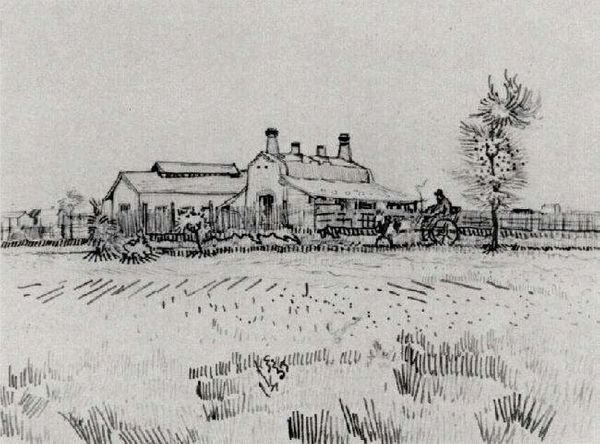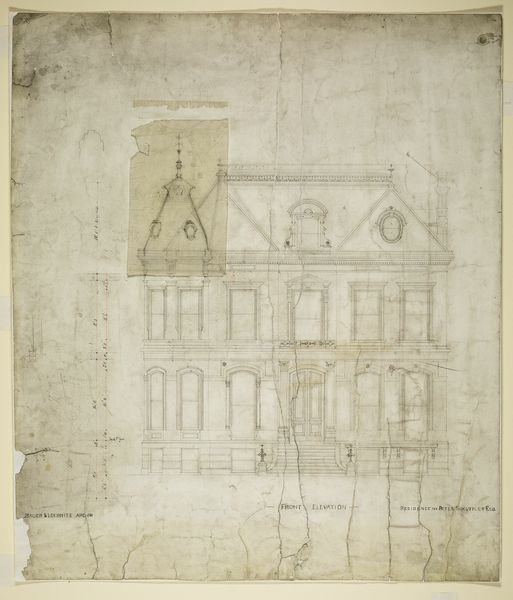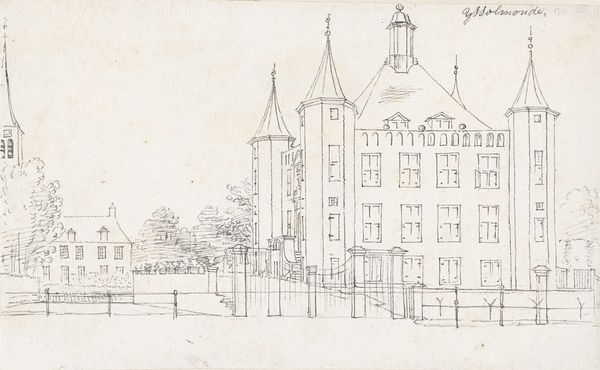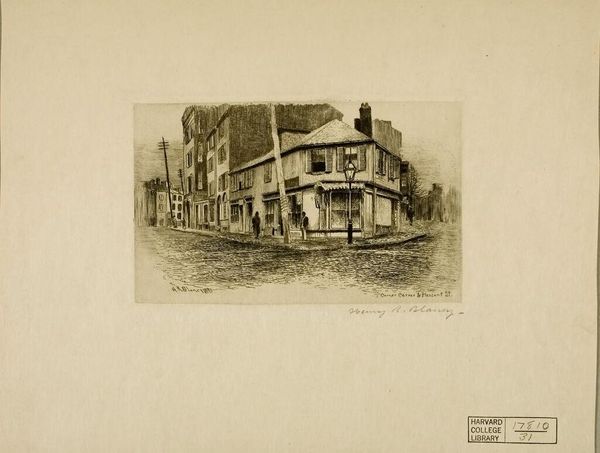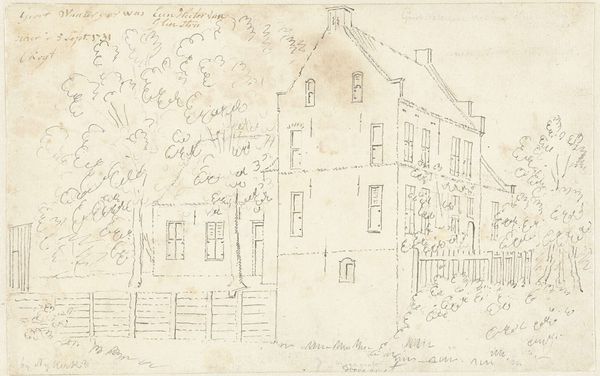
drawing, paper, pencil
#
portrait
#
drawing
#
landscape
#
paper
#
geometric
#
pencil
#
cityscape
#
building
Copyright: Public domain
Curator: This delicate drawing captures Vincent's Boarding House in Hackford Road, Brixton, London, created by Vincent van Gogh in 1873, while he resided there. Editor: Ah, yes, it evokes a kind of wistful quiet, doesn't it? The slightly faded quality almost feels like a half-remembered dream of a place. Curator: Indeed. Observe the sharp linear perspective, the careful construction of geometric forms representing the buildings and the interplay of light and shadow, achieved through subtle variations in pencil pressure. Note especially how Van Gogh organizes the composition. The foreground, middle ground and background all seem clearly defined, separated horizontally into three strips of varying heights. Editor: Precisely, though perhaps even Van Gogh couldn’t quite fully visualize what he wanted in that period, you see? Look how lightly that the image has been drawn in some portions - especially up the top near the roof. To me that feels that maybe he felt a kind of anxiety of fitting-in... like being a polite, transient ghost. Curator: I find your interpretation intriguing. However, from a structural perspective, the repetition of rectangular forms – the windows, the buildings themselves – emphasizes the order and uniformity characteristic of urban architecture. It provides a sense of stability. Editor: True, but stability can be a cage. Don't you see that feeling even within those uniform windows. So regularly they are set, with bars running across to enclose each little prison... Curator: You're suggesting it represents confinement? That is indeed a persuasive semiotic reading, given Van Gogh's biography, a biographical detail might even highlight something new, such as a psychological tension embedded within the drawing's very structure! Editor: Exactly! Or perhaps the structure mirrors his then quite rigid societal expectations of that age in history? What I admire in such moments of artistic process, such as is present here in this lovely little work, is that they show that even in very formal settings the human spirt is irrepressible, with expression still making itself known whether intended by the artist at first or not... What do you think? Curator: It prompts me to reconsider how we perceive formal structures in art, how those same structures simultaneously offer and resist meaning. Thank you for that, I might take away even more now. Editor: Ha! Well, that means we’ve both come closer to really 'seeing' the heart in this little picture. A worthy endeavor for our little audio guide in general, and to be honest it reminds me about how seeing something anew has allowed me in many ways to appreciate how art should actually be seen, by taking one step back to give yourself space for the artwork.
Comments
No comments
Be the first to comment and join the conversation on the ultimate creative platform.
